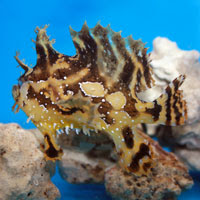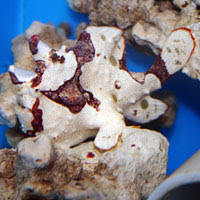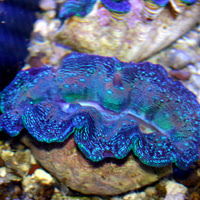The Fish Room in our Lancaster, PA retail store is one of the many attractions to visit here at That Fish Place. At over 12,000 square feet, with more than 700 holding tanks and 35,000 gallons of system water, our fish room is one of the biggest retail systems in the world. In fact, our retail system is larger than many of the wholesale systems in operation in the United States.
The saltwater holding systems in our fish room are comprised of 8 separate systems ranging in size from 120-3000 gallons totaling over 13,000 gallons. The salt water sections of the fish room include dedicated systems for Community Fish; Aggressive Fish; Coral; Reef Fish and Invertebrates; and Live Rock. The centerpiece of our saltwater holding systems is our one of a kind “look down” coral tray. The coral tray is made of 2 ½” thick acrylic and is a massive 20’ long x 4’ wide x 1’ deep. The entire tray is lighted by Sunlight Supply LumenMax 3 fixtures on moving light rails, for all you gadget geeks out there this is a really cool set up. All the main saltwater systems are filtered with RK2 commercial protein skimmer with computer controlled ozone and high output Ultraviolet Sterilizers. The skimmers are self cleaning, with timer operated internal wash down jets. The RK2 skimmers on the three main systems are a huge 24” in diameter and over 7’ tall.
Our freshwater holding systems are divided into 12 separate main systems that range in size from 200-3000 gallons each and total over 22,000 gallons. The freshwater section of the fish room includes dedicated systems for Community fish; Semi-Aggressive fish; South & Central American Cichlids and Predators; African Cichlids; Fancy Goldfish; Koi and Pond fish; Pond Plants; and Aquarium Plants. There are also several smaller stand alone systems for various uses.
To give you some sort of idea for the volume of our operation, we use approximately 1750 gallons of saltwater per week that works out to about 91,000 gallons of saltwater per year.
We also have a number of displays throughout our store, which total over 12,000 gallons. The biggest of which is our 2500 gallon saltwater touch tank. Shaped like a fish, this display allows you to touch stingrays, and other marine life. Bring your kids; they will be thrilled by the experience of touching a stingray if they have never had the opportunity.
Check us out, That Fish Place is much more that just a store, it is an entertainment destination for fish and animal lovers.
Until next time,
Dave
 One of the most interesting fish available in the aquarium hobby, is also one of the most difficult to see. Anglerfishes, also known as frogfish, are masters of disguise and camouflage, and have developed an amazing array of shapes, colors and textures to allow them to blend into their surroundings. Some look like rocks, some look like sponges, some look like algae, and some look like aliens from a distant planet.
One of the most interesting fish available in the aquarium hobby, is also one of the most difficult to see. Anglerfishes, also known as frogfish, are masters of disguise and camouflage, and have developed an amazing array of shapes, colors and textures to allow them to blend into their surroundings. Some look like rocks, some look like sponges, some look like algae, and some look like aliens from a distant planet. Anglers spend most of their time sitting on the bottom, or “walking” around on their modified pectoral fins, that look more like legs in some species. You will rarely see an Angler swimming around in the open, as they are poor swimmers.
Anglers spend most of their time sitting on the bottom, or “walking” around on their modified pectoral fins, that look more like legs in some species. You will rarely see an Angler swimming around in the open, as they are poor swimmers. That Fish Blog – Aquarium Advice and Information
That Fish Blog – Aquarium Advice and Information



